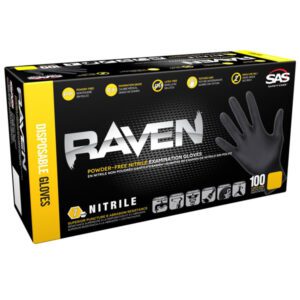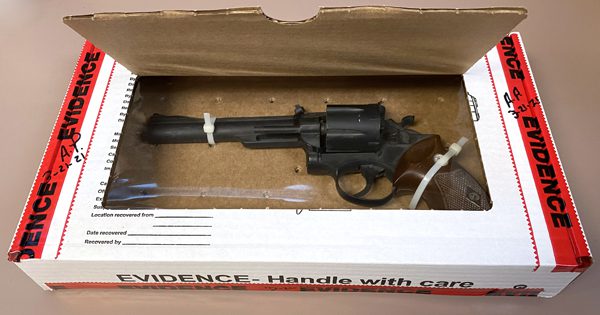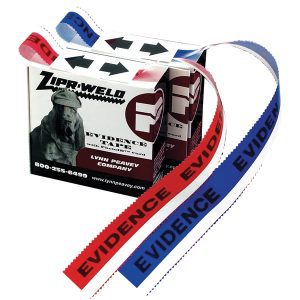Books, Software & Video
-
A Hands-On Introduction to Forensic Science: Cracking the Case
By Mark Okuda, Frank H. Stephenson, PhD (2014) One failing of many forensic science textbooks is the isolation of chapters into compartmentalized units. This format prevents students from understanding the connection between material learned in previous chapters with that of the current chapter. Using a unique format, A Hands-On Introduction to Forensic Science: Cracking the Case approaches the topic of forensic science from a real-life perspective in a way that these vital connections are encouraged and established. The book utilizes an ongoing fictional narrative throughout, entertaining students as it provides hands-on learning in order to "crack the case." As two investigators try to solve a missing persons case, each succeeding chapter reveals new characters, new information, and new physical evidence to be processed. A full range of topics are covered, including processing the crime scene, lifting prints, trace and blood evidence, DNA and mtDNA sequencing, ballistics, skeletal remains, and court testimony. Following the storyline, students are introduced to the appropriate science necessary to process the physical evidence, including math, physics, chemistry, and biology. The final element of each chapter includes a series of cost-effective, field-tested lab activities that train students in processing, analyzing, and documenting the physical evidence revealed in the narrative. Practical and realistic in its approach, this book enables students to understand how forensic science operates in the real world.Add to cartCall for Pricing
-
Color Atlas of Forensic Pathology
By Jay Dix. Featuring full-color, captioned photographs, Color Atlas of Forensic Pathology covers everything from time of death and decomposition to identification, causes of death and more.Add to cartCall for Pricing
-
Crime Scene Investigation
By Fish, Miller and Brasswell (2007) Crime Scene Investigation offers an innovative approach to learning about crime scene investigation, taking the reader from the first response on the crime scene to documenting crime scene evidence and preparing evidence for courtroom presentation. Crime Scene Investigation includes topics not normally covered in other texts, such as forensic anthropology and pathology, arson and explosives, and the electronic crime scene. Numerous photographs and illustrations complement text material. A chapter-by-chapter fictional narrative also provides the reader with a qualitative dimension of the crime scene experience. Required reading for Certified Crime Scene Analyst (CCSA)Add to cartCall for Pricing
-
Crime Scene Photography
By Edward M. Robinson Required reading for I.A.I. Crime Scene Investigator (CCSI), Certified Crime Scene Analyst (CCSA) and Certified Senior Crime Scene Analyst (CSCSA) Crime Scene Photography, Third Edition, covers the general principles and concepts of photography, while also delving into the more practical elements and advanced concepts of forensic photography. Robinson assists the reader in understanding and applying essential concepts in order to create images that are able to withstand challenges in court. This text is a required reading by both the International Association for Identification’s Crime Scene Certification Board and the Forensic Photography Certification Board. Includes an instructor website with lecture slides, practical exercises, a test bank, and image collection and many videos which can be used.Add to cart- Extensively illustrated with over 1000 full color photographs, with many images entirely new for the third edition
- Over 100 practical exercises help the reader grasp the practical applications
- Variations of correct and incorrect approaches, to be used alongside practical exercises, available online in the Instructor’s Manual
- The chapter on Special Photographic Situations includes new sections on autopsy photography, images from drones, recommendations to photographically document bloodstain patterns and firearms trajectories
Call for Pricing
-
Crime Scene Processing Laboratory Manual and Workbook
Crime Scene Processing Laboratory Manual and Workbook Authors: Patrick Jones, Ralph E. Williams The most important part of a CSI's job is accurate documentation of properly collected evidence. Documentation tells the story of the crime and can ultimately prove a suspect guilty. Through an array of specific exercises and actual document templates used in practice, Crime Scene Processing and Laboratory Workbook teaches students the proper physical evidence collection and processing techniques which will enable them to master the skills necessary to become a proficient CSI. Key Features:Add to cart- Presents the real-world experience of crime scene processing
- Provides simple directions for each assignment
- Includes a list of equipment and supplies needed for each exercise
- Contains numerous templates for proper documentation of evidence
Call for Pricing
-
Criminalistics: An Introduction to Forensic Science 9th Edition
By Richard Saferstein, Ph.D Written by a very well-known authority in forensic science, Criminalistics: An Introduction to Forensic Science introduces the non-scientific student to the field of forensic science. Through applications to criminal investigations, clear explanations of the techniques, and the abilities and limitations of modern crime labs, Criminalistics covers the comprehensive realm of forensics. The text strives to make the technology of the modern crime laboratory clear to the non-scientist. Combining case stories with applicable technology, Criminalistics captures the excitement of forensic science investigations. Required reading for Certified Senior Crime Scene Analyst (CSCSA)Add to cartCall for Pricing
-
Criminalistics: Forensic Science, Crime and Terrorism
By: James E. Girard, PhD, American University Criminalistics: Forensic Science, Crime and Terrorism, Second Edition introduces readers with no background in biology or chemistry, to the study of forensic science, crime analysis and application. Principle topics such as fingerprint identification, DNA, paint and glass analysis, drug toxicology, and forensic soil characterization are thoroughly explained in a reader-friendly manner. Unlike other texts available on this topic, this Second Edition is updated to include comprehensive coverage on important homeland security issues including explosives, weapons of mass destruction, and cybercrime.Add to cartCall for Pricing
-
CSI For the First Responder
By Jan LeMay A succinct guide on how to secure, search, identify, document, collect and preserve physical evidence essential for solving a case and making the evidence stand up in court. A Quick Reference Guide on CD-ROM is also included.Add to cartCall for Pricing
-
Current Methods in Forensic Gunshot Residue Analysis
By David Exline and A. J Schwoeble. Current Methods in Forensic Gunshot Residue Analysis shows how improvements in collection methods and analytical tools have allowed investigators to conduct more thorough gunshot residue examinations.Add to cartCall for Pricing
-
Dead Reckoning: The Art of Forensic Detection
By Jon J. Nordby. Dead Reckoning: The Art of Forensic Detection examines the applications of logic and science to decipher chaotic death scenes and difficult cases, and to derive orderly explanations from their jumbled clues.Add to cartCall for Pricing
-
Death Scene Investigation Procedural Guide
By Michael S. Maloney (2012) Those tasked with investigating death scenes come from a variety of backgrounds and varying levels of experience. Death Scene Investigation: Procedural Guide gives the less experienced investigator the procedures for almost any death scene imaginable while providing the seasoned investigator a ready reference for deaths occurring even under the most unusual of circumstances. It details the precise steps that need to be taken when processing and analyzing a death scene to ensure vital evidence is not lost and "red flags" are not missed.Add to cartCall for Pricing
-
First Unit Responder
By Mark Hawthorne. First Unit Responder is a guide to physical evidence collection for patrol officers.Add to cartCall for Pricing
-
Footwear Impression Evidence
By William J. Bodziak In Footwear Impression Evidence, FBI Special Agent Bodziak takes readers step-by-step through the field of footwear impression evidence.Add to cartCall for Pricing
-
Footwear, The Missed Evidence
By Dwane S. Hilderbrand, CFE This handbook was written as a field guide to the collection and preservation of footwear impression evidence. Written by a recognized expert, this book covers it all. 3rd EditionAdd to cartCall for Pricing
-
Forensic Pathology
By Dominick J DiMaio and Vincent JM DiMaio Forensic Pathology is a reference for every forensic pathologist. Written for both medical and investigative professionals.Add to cartCall for Pricing
-
Forensic Science Glossary
By John C. Brenner. Forensic Science Glossary is a single source reference that contains the spelling and definitions of commonly used terms found in forensic environments.Add to cartCall for Pricing
-
Forensic Science Lab Experiment Manual/Workbook
Most of the exercises in this workbook can be conducted with materials that are either readily available in chemistry and biology departments or can be purchased without significant expenditure. The experiments cover all the typical trace evidence tests including body fluid, soil, glass, fiber, ink and hair. Forensic Science Lab Experiment Manual/Workbook also includes experiments for impression evidence, (such as fingerprints, shoes, and firearms) as well as the use of photography and basic microscopy. Written by Thomas Kubic and Nicholas PetracoAdd to cartCall for Pricing
-
Friction Ridge Skin, Comparison & Identification of Fingerprints
By James F. Cowger Friction Ridge Skin, Comparison & Identification of Fingerprints is a concise book covering the "how-to's" of taking prints, photography, and proper classification.Add to cartCall for Pricing
-
Gunshot Wounds
Gunshot Wounds covers the practical aspects of firearms, ballistics and forensic techniques. You will find all of the information regarding weapons and ammunition you will need for your department or case!Add to cartCall for Pricing
-
Police Photography 7th Edition
Police Photography is a helpful textbook that teaches the fundamentals of photography and their application to police work. It offers clear explanations of the basic elements of photography that are used in investigative police work. Recommendations regarding equipment and techniques are offered throughout for both small and large police departments. Topics include the advantages and disadvantages of digital photography; guidelines for photographing accidents, crimes, evidence, questioned documents, and identification photos; and dealing with special situations such as homicide and arson. Step-by-step instructions how both experienced and inexperienced photographers the best way to capture specific situations encountered in law enforcement. A wide variety of photographs and illustrations demonstrate techniques and complement the material. A glossary provides a quick reference for looking up important definitions.Add to cartCall for Pricing
-
Practical Aspects of Rape Investigation
By Robert R. Hazelwood and Ann Wolbert Burgess Practical Aspects of Rape Investigation highlights the latest research findings from FBI studies of the serial rapist.Add to cartCall for Pricing
-
Practical Crime Scene Processing and Investigation
By Ross M. Gardner Practical Crime Scene Processing and Investigation 2nd Edition is a single-source reference for proven crime scene processing methods and procedures. Focusing on the day-to-day aspects of crime scene processing, this field-friendly guide describes what the crime scene investigator does, details the steps in the process, and explains how to decide on the order of the methods. After an overview of theory and ethics, the author guides readers through the methods, motives, and motions needed to secure the crime scene - and the investigation. Discussions on crime scene procedures, detailed figures, and real-life examples enhance understanding and demonstrate precisely how to apply the techniques and tools of the trade. Required reading for I.A.I. Crime Scene Investigator (CCSI), Certified Crime Scene Analyst (CCSA) and Certified Senior Crime Scene Analyst (CSCSA)Add to cartCall for Pricing
-
Practical Homicide Investigation
Practical Homicide Investigation is the encyclopedia source on homicide investigation. Written by Vernon J. Gerberth, MS, MPS, BBA, BFNINA. 5th Edition.Add to cartCall for Pricing
-
Practical Homicide Investigation Checklist & Field Guide
Practical Homicide Investigation Checklist & Field Guide is a "how-to" guide that leads you step-by-step through the investigation of a death/crime scene. Written by Vernon J. Gerberth, MS, MPS, BBA, BFNINA.Add to cartCall for Pricing
-
Practical Investigation Techniques
By Kevin B Kinnee Practical Investigation Techniques is useful for new as well as veteran investigators to establish a practical standard for conducting a wide range of diverse criminal investigations. Written by a veteran investigator, the book teaches the proper investigative techniques for such criminal activities as extortion, blackmail, credit card fraud, check fraud, fencing operations, employee theft, sports gambling, money laundering, and shoplifting rings.Add to cartCall for Pricing
-
Practical Shooting Scene Investigation
Practical Shooting Scene Investigation is a basic nuts and bolts guide to the on-scene investigation of shooting cases. Written by Dean H. Garrison.Add to cartCall for Pricing
-
Principles of Bloodstain Pattern Analysis: Theory and Practice
Bloodstain evidence is becoming a key piece of the puzzle in the outcome of some of the world's most notorious criminal cases. Principles of Bloodstain Pattern Analysis: Theory and Practice presents an in-depth investigation into this important subject matter and takes a multi-disciplinary approach throughout the book. Features 500 full-color photographs, appendices with scientific data, and relevant court decisions and rulings. Written by: Stuart James - James and Associates, Fort Lauderdale, FL Paul Erwin - Kish Forensic Consultant & Associates, Corning, NY T. Paulett Sutton - University of Tennessee, Memphis, TNAdd to cartCall for Pricing
-
Quantitative-Qualitative Friction Ridge Analysis
Quantitative-Qualitative Friction Ridge Analysis has been described as the definitive source in friction ridge identification, as it examines the latest techniques and methods as well as the history of friction ridge identification. Features a variety of photographs and several detailed illustrations. The book includes information on the newest identification method, Palmar Flexion Crease Identification (palm lines), which was designed by the author and has aided in solving several criminal case where the fingerprints were not available. by: David Ashbaugh - Ridgeology Consulting Services, British Columbia, CanadaAdd to cartCall for Pricing
-
Scott’s Fingerprint Mechanics
Scott's Fingerprint Mechanics is the mother of all fingerprinting textbooks. A comprehensive book on the basics of latent print development techniques that includes rare information on fingerprinting technology and methods. by Robert D. Olsen, SrAdd to cartCall for Pricing
-
The Practical Methodology of Forensic Photography
By David R. Redsicker The Practical Methodology of Forensic Photography contains the latest methods of photographic documentation with a practical step-by-step representation on proper photographic preparation of evidence and documentation. Includes a glossary of terms crucial in preparation of legal reports.Add to cartCall for Pricing
-
Entomology and Death
Entomology and Death was written in response to the growing interest of law enforcement personnel and forensic scientists in bringing entomology into crime scene investigations. This book carries the reader from an introductory background in forensic entomology all the way through the legal process. Collectively, the authors of this book have over 100 years of experience in the study of entomology in regards to crime scene investigations. By: E. Paul Catts and Neal HaskellAdd to cartCall for Pricing




































